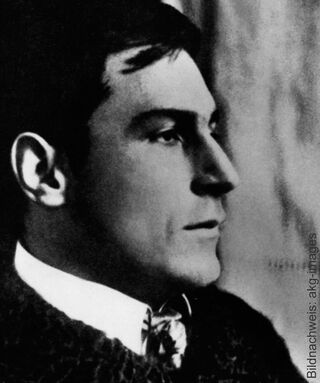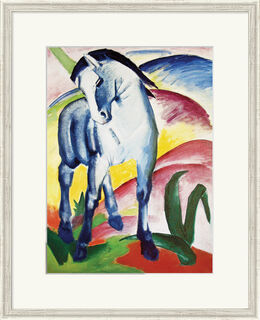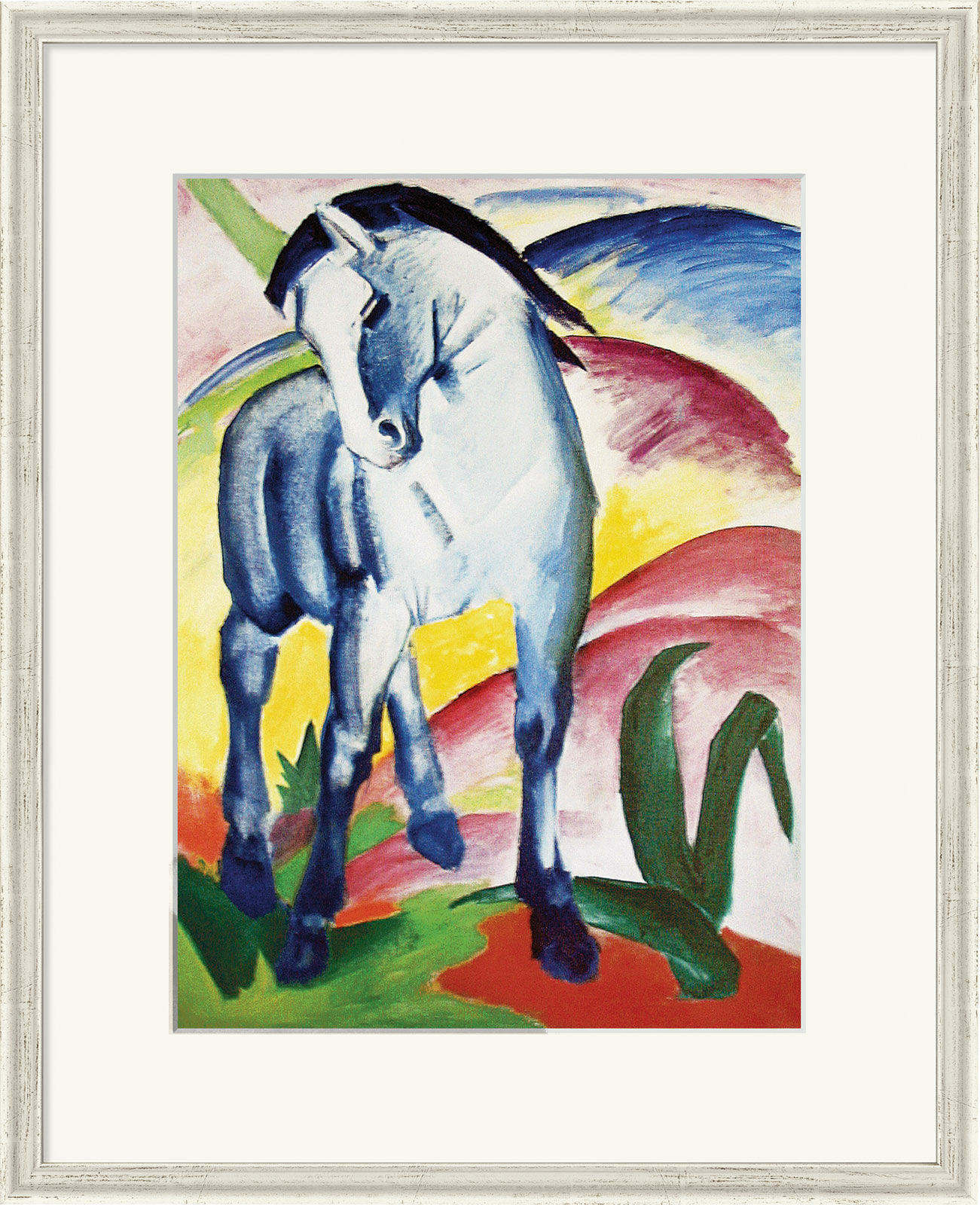Picture "Blue Horse I" (1911), framed


Picture "Blue Horse I" (1911), framed
Quick info
reproduction on artist's cardboard | framed | passe-partout | glazed | size 72 x 58.7 cm (h/w)
Detailed description
Picture "Blue Horse I" (1911), framed
"I seek to empathise pantheistically with the trembling and trickling of blood in nature" is how Franz Marc (1880-1916) describes his approach to painting. His psychic sensibility, which he translated into colour, transports his subjects out of the naturalistic into a sphere of the unreal, dreamlike, or symbolistic. His preferred motifs are animals in their direct emotional experience. Inspired above all by the orphic, colourful cubism of Robert Delaunay, whom he visited in Paris in 1912 together with his Blaue Reiter colleague August Macke, Marc painted his most important pictures between 1911 and 1914.
Original: 1911, oil on canvas, 112 x 84.5 cm, Städtische Galerie im Lenbachhaus, Munich.
4-colour, gridless reproduction on artist's cardboard. In a silver solid wood frame with passe-partout, glazed. Size 72 x 58.7 cm (h/w).
Customer reviews

About Franz Marc
1880-1916
Franz Marc's unique talent was recognised and encouraged at the Munich Academy. On several trips to Paris, he discovered the works of van Gogh for the first time, which made a significant impression on him and helped him to develop an independent artistic language. Through his friend August Macke, he met Wassily Kandinsky, Gabriele Münter and Alfred Kubin, with whom he founded the Expressionist artists' association "Der Blaue Reiter" in 1911. At the outbreak of World War I, Marc was drafted into military service and died two years later in the Battle of Verdun.
Marc examined Naturalism, Art Nouveau and French Impressionism, but sought a new language of expression in order to be able to depict "the spiritual essence of things". With unprecedented consistency, he approached a new form of art in which colours acquired a symbolic meaning far beyond naturalistic representation: "Every colour must clearly say who and what it is, and must be set on clear shapes", Marc explained. For him, blue is the colour of the spiritual, red is love, passion and vulnerability, yellow is the sun and femininity.
Animal, in particular, were the focus of his painting, as they, in contrast to people, symbolised originality and purity to him. Just like Kandinsky, he sought the renewal of the spiritual in art.
The German artists‘ association "Der Blaue Reiter" ("The Blue Rider") was founded in Munich in 1911 by Wassily Kandinsky and Franz Marc during the German Expressionist period.
The name was originally the title of the painting by Kandinsky and also the title of the almanac published by Kandinsky and Marc. Members included Paul Klee and August Macke. The group criticised the prevailing art canon as too academic and elitist and demanded more openness and diversity. The artists turned away from realism and began to paint expressively in an increasingly abstract style using strong colours.
The group disbanded at the beginning of World War I.
Artistic movement that replaced Impressionism in the early 20th century.
Expressionism is the German form of the art revolution in painting, graphic art and sculpture, which found its precursor in the works of Paul Cézanne, Vincent van Gogh and Paul Gauguin in the late 19th century. The Expressionists attempted to advance to the primal elements of painting. With vibrant, unbroken colours in large areas and with the emphasis on the line and the resulting targeted suggestive expressiveness, they fought against the artistic taste established by the bourgeoisie.
The most important representatives of Expressionism were the founders of "Die Brücke" (The Bridge): Ernst Ludwig Kirchner, Erich Heckel, Karl Schmidt-Rottluff, Max Pechstein, Otto Mueller and Franz Marc, August Macke and others.
Masters of Viennese Expressionism are Egon Schiele and Oskar Kokoschka. Among the sculptors, Ernst Barlach is the most famous.
Fauvism is the French form of Expressionism.


